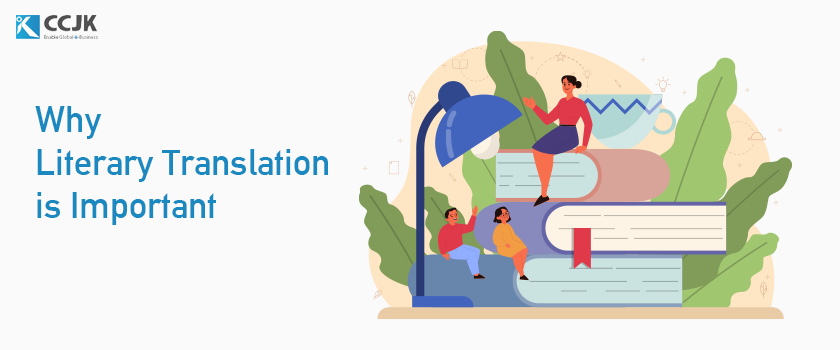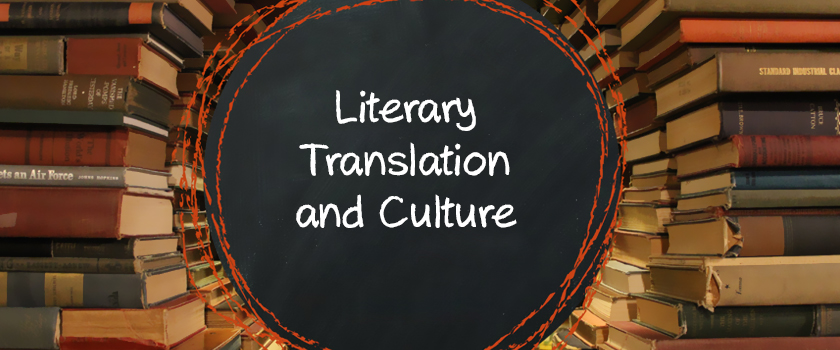The two main parts of this field of translation are literary translation and non-literary translation. There are both similarities and differences between them. This article will discuss the differences between them. Before starting the discussion, we first introduce these two basic concepts, literary text, and non-literary text.
A literary text is a language tool, which vividly reflects the author’s cognition of life, society, and feelings through language and words. It hopes to use words to arouse people’s yearning for beauty and words to convey artistic beauty to people.
Compared with literary texts, non-literary texts are formal textual forms, including laws, medicine, news, science and technology, and other types. To be simple, in addition to literary texts, other texts can be called non-literary texts.
Non-literary translation places emphasis on facts that are accurate and to-the-point descriptions of objective facts. Its logical thinking is very rigorous; literary translation places emphasis on the transfer of art and value.
In the following chapters, we will briefly summarize the characteristics of literary and non-literary translation.
Table of Content
Historic View of Translation
Just like human society, translation services also came across the historical process of secularisation. In old times, the translated texts were legal and religious. Moreover, around 150 years most of the text was literal and it was written by scientists, philosophers, and artists.
According to Eugene Nida, 5% of the total work in literature is translated. The other wild guess is that the translation of songs, texts, and poetry consists of 0.5 of importance and total value. Despite differences in methods, subject matter, and different languages in non-literary and literary translation, some novels like Jane Austen and War and Peace are written on a factual basis.
Moreover, they don’t differentiate between both types of translation. Furthermore, they allow preserving the old statements that say that translation is a most authentic task. It is more connotative than denotative.
Furthermore, they ignore the massive non-literary majority of translations. No doubt, that translation that aims to portray and depict truth can be in the first place because they try to bring the meaning of the original text.
In non-literary texts, they may not give importance to facts but give importance to quality. On the contrary, in literary translation, you can get accurate results to a certain level. Therefore, they look for connotative and denotative meanings. It has many characteristics. One of them is, it uses two languages as its tools.
Therefore, each of the translations of the Journal of Translation which was issued on Jan 1 2004 contains different words that have different formations and sounds. Moreover, it contains different lexical gaps and deficiencies.
Sometimes translators mix up all the translation procedures. In non-literary translation, you can achieve results near perfection. However, the hardest part of literary poetry is to consider different linguistic factors that are sound and rhyme. Remember that translation is historic and the basis of communication. Therefore, this part of the communication will remain unbreakable. Literary and non literary translation requires careful understanding, and here’s a comprehensive overview of both.
Literature Translation Overview
1. Overview of Literary Texts
Literary texts can be recognized as literary and artistic forms, divided into many genres such as poetry, novels, prose, essays, and dramas. The age of creation and region can be divided into ancient literature, modern literature, Chinese literature, and foreign literature.
Combined with their own ideological systems, literary texts are conscious works created by writers through careful observation and thinking of life. Therefore, literary texts have specific attributes such as uniqueness, thinking, artistry, and value.
Through the study of the literary works of writers in different eras, we can effectively understand the political factors, cultural factors, and social factors of the creative background. Especially in the theme of novels, writers can improve the ideological consciousness of the masses of society effectively by thinking about the existing social environment and criticizing the social status at that time.
2. Literary Translation Concepts and Characteristics
Mr. Ch’ien Chung-shu once said: “In the process of literary translation, not only the original meaning of the article should be translated, but also the historical environment of the author in the creative process, the language habits of the country and other factors, then combined with our language It is used to restore the article, and the reader should not feel the rigid conversion of semantics in the translation.”
That is to say, literary translation requires translators to fundamentally understand the literary text, recognize the literary text, and be familiar with the creator’s life, life background, social form, national attributes, and social contradictions at that time, which can effectively understand the meaning of special sentences, symbolic sentences and new words appearing in the literary text. What’s more, by means of translation annotations, readers can clearly understand the author’s creative intentions.
Non-Literary Translation Overview
1. Overview of Non-Literary Texts
The creators of non-literary translations are experts, scholars, technicians, advertisers, etc. working in professional fields. Therefore, the creation of non-literary Translation texts has certain functionality and value, such as medical research papers, advertising planning schemes, etc. Technical personnel in various professional fields put the labor results on paper and make them published or carry out substantive research work.
Therefore, the non-literary translations have a strong logic and rigorousness in the creation process, and the description of objective things is also more objective and specific. Literary texts can create characters, places, and events through fictitious means in the creative process, but different from literary texts, non-literary texts require authors to describe objective things truthfully, and there can be no fictitious elements.
2. Non-Literary Translation Concepts And Characteristics
Through the above introduction to literary translation, we can know that drama, prose, novels, etc. all belong to literary translation. So, what are the common non-literary translations? Due to the objective reality of non-literary texts, the scope of non-literary translation includes politics, economy, and business.
We can define non-literary translation as an act of conveying real news in different languages. Next, we will summarize the characteristics of non-literary translation, there are the following three points:
First, according to the needs of the customers who provide the text, as well as their applications, use, and other relevant information, formulate corresponding translation strategies and provide translation content that meets the needs of customers.
The second is an objective and true description of the translated text without any personal emotions.
The third is simple language. Classified according to the attributes of the article, and then translated accordingly according to different categories.
The Difference Between Literary Translation and Non-literary Translation
1. Differences in Translation Objects
From the above, we already know that literary works are arts with yearnings and appreciation for beauty. Compared with literary works, non-literary works focus more on reality. From the perspective of translation, the documents that literary translation contacts are classic works, and have higher requirements for the translators’ literary literacy and literary creation ability. Not only must they have basic literary creation ability, but also a rich foreign language. Reading and writing skills.
That is, in the process of reading the English original text, understand the artistic conception and meaning of the foreign literary text, and combine the style of writing accepted by contemporary Chinese readers to retain the original textual artistic conception and ideological system and make the translation language meet the needs of contemporary readers, to make it more beautiful linguistically.
Therefore, under normal circumstances, there will be no errors in thinking in literary translation. In short, the quality of the translated text is very high.
Instead of literary translation, in most cases, according to the objective and realistic requirements, there will be some situations where the language is not standardized and the meaning of the expression is unclear, so non-literary translation cannot be blindly loyal to the original text like literary translation.
2. Differences in Translation Requirements
There are many standards for translation, and most professionals engaged in translation have put forward their own opinions. Their opinions have guiding significance for the translation of ordinary articles. However, due to different themes and types of translation and different uses, the translation requirements are also different to a certain extent.
As far as literary translation is concerned, its primary purpose is to disseminate art, and the transmission of other information is ancillary. Since the purpose of literary translation is to express the author’s emotions, translators engaged in literary translation must preserve the emotion, style, and artistic conception of the original work to the greatest extent, and also express the social meaning and incidental meaning of the original work more deeply, And strive to achieve the same artistic feeling as the target reader. Due to the characteristics of literary translation, the articles translated by different translators are not the same.
Therefore, our requirements for literary translation are relatively loose, as long as the translated sentences can express the artistic information and literary information carried in the original text.
Conversely, if the works translated by literary translation correspond one-to-one with the original text, the original beauty of the mood is lost, and such a translation may not be a good work. The non-literary translation conveys an accurate message.
Its most basic requirement is to accurately express the original message without adding any personal emotion and personal fiction. Those who are engaged in non-literary translation must have a correct understanding of the translated text, and be careful about the translated words.
Do not select ambiguous words to avoid unnecessary misunderstandings; in terms of logical thinking, rigorous thinking is required There must be no logical loopholes.
3. Differences in Language Features
The language difference between literary translation and non-literature mainly depends on the purpose and function of the translated work. The translation of literary works aims to meet the spiritual needs of the readers.
Therefore, in terms of language style, the author of the translation is required to use enough vivid, lyrical, and creative vocabulary, and through the integration between the sentence pattern and the sentence above and below The repeated use of vocabulary expresses the original author’s ideological connotation and social life status as well as the characters’ complex emotional emotions.
That is to say, in the translation of literary works, the translator should make the language full of activity and charm, so as to attract readers to read. As a result, the use of characters is scaled and expressive, and the overall length is longer. Non-literary works are different from literary works. It prohibits the appearance of all subjective and conjecture vocabulary or sentences and requires precise and precise words.
4. Differences in Translation Thinking
At the level of translation thinking, literary translation does not require high levels of rigorous translation thinking and logical accuracy. Literary translation can be based on the understanding of the core ideas and themes of literary texts.
In the translation process, you can add your own understanding and ideas, and you can express the love or dislike of a particular literary character through the use of words, and some of the content is cumbersome The author can make selective deletions of texts whose central ideas are not related to the theme, so as to ensure the compactness and readability of the narrative of the work.
In this regard, it is most common in the translation work of youth literary classics. Because there are a lot of bloody and inappropriate descriptions in the original works, the translators have the right to be obliged to delete them, so as to preserve the overall plot and ideas of the original text. Readers provide suitable translation works.
Instead of literary translation, due to the function and value of the text, the translator is not allowed to make any changes, otherwise, it will lead to errors in commercial or other cultural activities due to cultural differences in different countries. Therefore, in the case of ensuring the integrity of the original text, translators should maintain rigorous thinking and logical correctness, and no errors are allowed.
5. Differences in The Quality of Translators
Both literary translation and non-literary translation are different types of translation, and the quality of article translation has a great relationship with the quality level of the translators.
First, no matter whether the translator is engaged in literary translation or non-literary translation, he must have a solid bilingual ability. This is the most basic quality that a translator must have. Literary translation requires the creation of translators, especially when translating the mother tongue into other national languages.
The translator’s imagination has a great relationship with the quality of the translated articles, but only a small number of translators have such capabilities. For those who are engaged in literary translation, their bilingual ability is very important.
After effectively acquiring foreign language information, they can quickly select the appropriate words that meet the narrative needs of the segment and the language with the appropriate color to complete the expression of the core ideas of the original text; Translators engaged in non-literary translation have strict requirements on the accuracy of the translated content and must ensure the reasonable expression of the original semantics, and there can be no ambiguity in the sense.
Therefore, the translator only needs to ensure that the translated language can express the meaning of the original text, without being too gorgeous or having any literary skills.
Second, in the translation of professional knowledge, there are certain differences between literary translation and non-literary translation. Through the above introduction, we can know that the main content of the scope of literary translation includes novels, prose, drama, and so on.
The readers of literary translation are relatively extensive, so the translators of literary translation are required to use their linguistic advantages to resonate with the readers of the original text on the basis of expressing the thoughts and emotions of the article, without the need to translate professional terms one by one.
In non-literary translation, due to the characteristics of the translated text, translators are required to use professional knowledge to translate, to ensure the professionalism, practicability, and explanatory nature of the translated works, and to play the social role of non-literary translated works.
6. Differences in The Target Audience
If we talk about literary translation, it often aims at a broader audience, such as general readers, scholars, and literary critics, among others. While providing literary translation, the translator’s goal is to maintain the same voice and style as the author while considering the unique preferences and expectations of their target audience, which in this case can also be termed as readers. When it comes to non-literary translation, on the other hand, it tries to aim at very specific end users. These end users could be medical practitioners, engineers, or legal professionals who require extremely precise and accurate translations for their specific requirements.
Differences in Translation Strategies
1. Strategies For Literary Translation
Analyze the types of texts. Literary works are expressive texts. It is a visual expression of the creator’s artistic thinking. The vocabulary, paragraphs, and texts in the text all reflect the author’s thought structure.
Therefore, in the translation process, the problem should be viewed from the perspective of the original author, so as to create content that has the same mood and atmosphere as the original text and has the same idea.
In order to ensure that the original author’s ideological system is not destroyed, otherwise, there will be a problem of ideological statement faults, which will lead to confusion in the reader’s thinking logic.
2. Strategies for Non-Literary Translation
Non-literary translation emphasizes facts, that is, an accurate and straightforward description of objective facts. Its logical thinking is very rigorous; literary translation emphasizes the transfer of value and art.
Based on the content of the original article, the translator, based on his literary literacy, can create a second time, so that the readers after translation can resonate with the readers before translation.
Only when we realize the difference between literary translation and non-literary translation can we understand the translation more deeply and help to translate higher-quality articles.
Difference Between Literary And Non Literary Text Strategies
Literary and non-literary translation have distinct characteristics and purposes, and the strategies used in creating and understanding them also differ.
Literary Texts: These texts are primarily created for artistic and aesthetic purposes. They often aim to evoke emotions, provoke thoughts, and explore the human experience through various literary techniques.
Non-Literary Texts: These texts are created with the intention of conveying information, providing facts, explaining concepts, or instructing the reader. They focus on clarity and accuracy. Differences in strategy also lie in language, narrative structure, emotional engagement, interpretation, and reader interaction.
Literary texts prioritize artistic expression and emotional resonance, employing creative language and complex narrative structures. Non-literary texts prioritize clear communication of facts and information, using straightforward language and organized structures. The strategies used in each type of text align with their respective goals and purposes.



